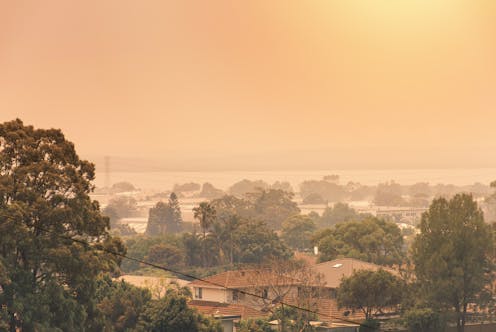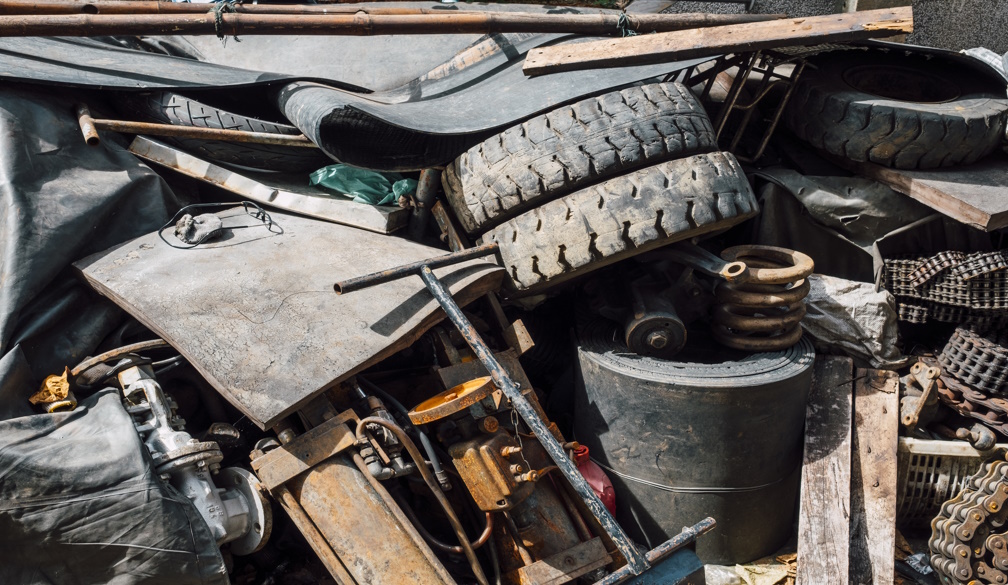the rising death toll from climate-charged fire in the landscape
- Written by Fay Johnston, Professor, Menzies Institute for Medical Research, University of Tasmania

Inhaling smoke is bad for you. Smoke from any kind of fire, from bonfire to burn-off to uncontrolled wildfire, can have serious consequences.
Even low levels of smoke can make many heart and lung diseases worse, sometimes triggering a rapid deterioration in health. When we are repeatedly exposed over months and years, air pollution, including smoke, makes us more likely to develop heart, lung and other chronic diseases.
Now, new international research has linked the warming climate to some of the deaths from exposure to fire smoke in large parts of the world, including Australia.
In 2012, I led the first team to estimate the number of landscape fire smoke-related deaths globally each year. Our estimate of 339,000 deaths did not attempt to pull out the influence of climate change. But we noticed much higher impacts during hotter and drier El Niño periods.
The researchers behind the new study took this a step further, estimating how much of the historical burden of fire smoke-related deaths might be attributable to climate change. They found a considerably increasing proportion, from 1.2% in the 1960s to 12.8% in the 2010s.
Where there’s fire, there’s smoke
A wall of flames is way more deadly than a bit of smoke in the air – isn’t it? It’s not so simple. When you look back at a fire disaster, the smoke-related death toll in the aftermath can be surprisingly high.
During the extreme Australian bushfire season of 2019–20, there were 33 deaths directly related to fire. But my team found the number of smoke-related deaths was 429, more than ten times higher.
Smoke travels vast distances and can affect very large populations. Millions of people in Australia and New Zealand breathed smoke from the 2019-20 Australian fires. The sheer scale of the air quality impacts means the associated public health burden can be very large.
Smoke harms our health in two ways. In the short term, it makes existing diseases worse. As soon as the body detects smoke, it initiates immune and stress responses that affect, among other things, blood pressure, blood glucose and the risk of forming blood clots.
For some people with serious chronic illness such as heart and blood vessel disease, these subtle changes can trigger deadly complications including heart attacks or strokes.
When smoke reaches our eyes, throats and lungs, it acts as an irritant. This can be enough to make people living with asthma or other lung conditions seriously unwell.
Over the longer term, air pollution is a known risk factor for developing heart disease, lung disease, asthma, diabetes and stroke, and landscape fire smoke is increasingly contributing to the load.
How did the researchers find this out?
Most research on the health impact from air pollution focuses on the damage done by fine particles called PM2.5. These particles are defined as those less than 2.5 micrometres in diameter, meaning they are small enough to get into the lungs and bloodstream.
In the new paper, the authors used computer models to estimate how global changes in fire-related PM2.5 emissions between 1960 and 2019 had been influenced by the warming climate. To do this, they evaluated climate factors known to promote fire activity, such as higher air temperatures and lower humidity. Then, they used modelling to estimate how these changes would have influenced fire activity, smoke exposure and smoke related deaths globally.
Using this approach, the authors attributed 669 (1.2%) of the wildfire-induced smoke-related deaths in the 1960s to climate change. But that rose to 12,566 (12.8%) in the 2010s. They found the influence of climate change was higher in some regions, including Australia.
Climate change is making fires worse
These reported numbers seem to be surprisingly low when put in context with previous global and regional estimates of deaths due to air pollution from landscape fires.
But estimating how many deaths can be attributed to landscape fire smoke is a challenging task, requiring assumptions about the size and strength of the links between meteorology, fire activity, smoke production and dispersal, population vulnerability and health outcomes in the huge diversity of landscapes, climates and cultures across the world.
Importantly, the estimates in this recent study were driven by changes in climate. But the modelling approach can less easily account for fluctuations and trends in another incredibly important driver of fire activity on Earth, human activity.
For example, huge volumes of smoke globally are created by setting fires to burn and clear tropical forests for agriculture. Corporate activity and government policies drive these fires more than climate change, and are harder to capture in a modelling study.
Nevertheless, these new results clearly support empirical studies showing increases in extreme fire activity attributable to climate change, and illustrates the relative impacts when other influences are held constant. Importantly, it points to parts of the world – including the north and southeast of Australia – where we can expect harmful population smoke impacts to get worse.
The likely geographic impacts can be put together with information about the location of more vulnerable population groups, or higher population densities, to focus on responses where they are most needed. But in Australia that means pretty much everywhere, including the tropical north.
What we can do about it?
To adapt to a smokier world, we will need comprehensive education about escalating air quality hazards and ways to reduce the harm for both the general public and health professionals.
These include keeping on top of long-term health conditions that could be made worse by air pollution, knowing how to keep track of air quality, and when to use strategies such as face masks, air filtration and managing the ventilation of homes and buildings to reduce individual smoke exposure.
Adaptive responses alone do not get around the urgent need to act on climate change. Watching fire seasons around the world get steadily worse year on year really frightens me. We are getting into a vicious cycle where the hotter climate is driving more and more fire. These fires are increasingly venting long-stored carbon and contributing to further climate change.
As well as ending the massive combustion of fossil fuels, we must halt the burning of tropical rainforests and agricultural crop residues globally. These actions will also dramatically improve air quality and health globally and support ongoing capture and storage of atmospheric carbon.
Authors: Fay Johnston, Professor, Menzies Institute for Medical Research, University of Tasmania


















